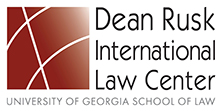Abstract
Trade and environment are both primary values in an ecologically and economically interdependent world; unleashing trade without regard to environmental impact is as detrimental as guarding the environment at the expense of trade and development. Tuna and dolphins have come to symbolize the policy struggle between trade and environment. In early 1990, the United States banned the import of tuna from Mexico and other countries that were fishing in a manner that damaged dolphins in the Eastern Tropical Pacific Ocean. Mexico challenged this ban before a GATT Panel, which ruled against the United States and held that the tuna ban was inconsistent with the GATT. This ruling prompted attacks on the GATT from the environmental community, an unexpected front who had a “catalogue of grievances” against free trade. A large body of literature has emerged subsequent to the tuna-dolphin controversy, which attempts to reconcile the goals of free trade and those of environmentalists. Recognizing the practical difficulty of making an international agreement on environment, the WTO member states created the Committee on Trade and Environment. However, the CTE’s actions are slow. This paper argues that a more realistic and efficient approach is to use a “panel-created” doctrine that balances the interests of trade and environment, and that this doctrine should be a rule of reason approach. This paper will examine the jurisprudence of the United States and the European Union to show that they have created a rule of reason approach to balance the contending goals of trade and environment. The issues raised by the more recent US shrimp embargo will also be addressed and analyzed under the suggested rule of reason analysis.
Repository Citation
Paruthipattu, Anantha K., "Are Tuna and Dolphins the Same? A Rule of Reason Approach to Resolve the Trade and Environment Conflict" (1997). LLM Theses and Essays. 200.
https://digitalcommons.law.uga.edu/stu_llm/200
Included in
Antitrust and Trade Regulation Commons, Comparative and Foreign Law Commons, Environmental Law Commons, International Law Commons, International Trade Law Commons, Law and Economics Commons, Legislation Commons, Transnational Law Commons


